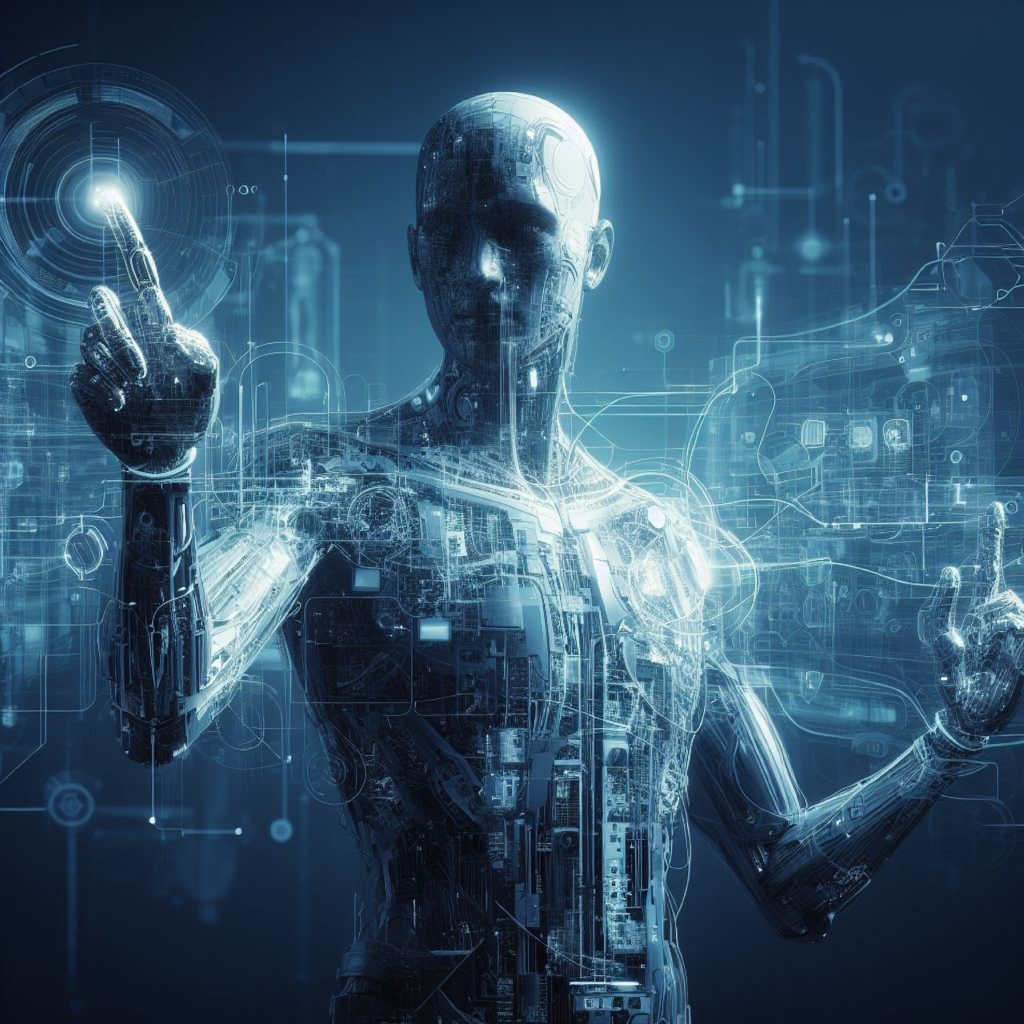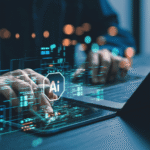Introduction
technology in 2025. Imagine a world where your doctor diagnoses illnesses with pinpoint accuracy, your car drives itself, and your home anticipates your needs before you even think of them. This isn’t science fiction—it’s the reality we’re rapidly approaching. 🚀 As we stand on the cusp of 2025, artificial intelligence (AI) and automation are poised to revolutionize every aspect of our lives, from healthcare to education, transportation to finance. technology in 2025.
But with great power comes great responsibility. 🦸♀️ While some fear job displacement and privacy concerns, the potential benefits of these technologies are too significant to ignore. AI and automation promise to solve some of humanity’s most pressing challenges, from improving patient outcomes to combating climate change. As we delve into the positive impacts of AI and automation, we’ll explore how these technologies are set to enhance our world in ways we’re only beginning to imagine.
From AI’s role in transforming healthcare to automation’s impact on manufacturing efficiency, from personalized learning experiences to eco-friendly transportation solutions, we’re about to embark on a journey through seven key areas where AI and automation are making waves. 🌊 Let’s dive in and discover how these groundbreaking technologies are shaping a brighter, more efficient future for us all. technology in 2025.

AI’s Role in Enhancing Healthcare
Improved Disease Diagnosis
AI-powered diagnostic tools are revolutionizing healthcare by analyzing medical images and patient data with unprecedented accuracy. These systems can detect subtle patterns and anomalies that human eyes might miss, leading to earlier and more precise diagnoses. technology in 2025.
Personalized Treatment Plans
AI algorithms are enabling the creation of highly personalized treatment plans by:
- Analyzing vast amounts of patient data
- Considering genetic factors
- Evaluating treatment efficacy across similar cases
This tailored approach significantly improves patient outcomes and reduces side effects.
Streamlined Medical Research
AI is accelerating medical research by:
- Analyzing large datasets quickly
- Identifying potential drug candidates
- Predicting clinical trial outcomes
This efficiency is speeding up the development of new treatments and therapies.
AI-Powered Robotic Surgery
Robotic surgery assisted by AI is enhancing surgical precision and patient safety. These systems offer:
| Benefit | Description |
|---|---|
| Enhanced Precision | Minimizes human error and tremors |
| 3D Visualization | Provides surgeons with better spatial awareness |
| Faster Recovery | Results in smaller incisions and reduced trauma |
| Remote Surgery | Enables expert surgeons to operate from afar |
As we move towards 2025, these AI-driven advancements in healthcare promise to improve patient care, reduce healthcare costs, and save countless lives. The integration of AI in medical education will be crucial to fully leverage these technologies in practice.
Automation Revolutionizing Manufacturing
Now that we’ve explored AI’s impact on healthcare, let’s delve into how automation is transforming the manufacturing industry. This technological revolution is reshaping factories and production lines, bringing about significant improvements in various aspects of manufacturing. technology in 2025.
A. Increased Productivity and Efficiency
Automation in manufacturing has led to unprecedented levels of productivity and efficiency. Robotic systems and AI-powered machines can work 24/7 without fatigue, significantly increasing output. technology in 2025 For example:
- Automated assembly lines can produce goods at a rate 2-3 times faster than traditional methods
- AI-driven quality control systems can detect defects with 99% accuracy
- Smart inventory management reduces downtime by ensuring materials are always available
B. Enhanced Worker Safety
One of the most crucial benefits of automation is the improvement in worker safety. By taking over dangerous or repetitive tasks, robots and automated systems protect human workers from potential hazards. technology in 2025.
| Task | Safety Improvement |
|---|---|
| Heavy lifting | 80% reduction in back injuries |
| Welding | 90% decrease in burns and eye damage |
| Chemical handling | 95% reduction in exposure incidents |
C. Cost Reduction and Resource Optimization
Automation leads to significant cost savings and better resource management:
- Reduced labor costs
- Minimized waste through precise material usage
- Lower energy consumption with smart power management systems
- Decreased maintenance costs due to predictive maintenance
D. Customized Production at Scale
Advancements technology in 2025 in automation have made mass customization a reality. Manufacturers can now produce personalized products at scale without sacrificing efficiency or increasing costs significantly. This flexibility allows companies to meet diverse consumer demands while maintaining high production volumes.
As we move forward, we’ll explore how AI is transforming another crucial sector: education. technology in 2025
AI-Driven Advancements in Education
Now that we’ve explored how AI and automation are transforming healthcare and manufacturing, let’s dive into the exciting advancements in education. AI is revolutionizing the way we learn, making education more personalized, efficient, and accessible than ever before. technology in 2025.
Personalized Learning Experiences
AI-powered systems can analyze individual student data to create tailored learning paths, adapting to each student’s pace, strengths, and weaknesses. This personalization ensures that students receive the most effective instruction for their unique needs.
Intelligent Tutoring Systems
AI-driven tutoring systems provide round-the-clock support to students, offering:
- Immediate feedback on assignments
- Step-by-step problem-solving guidance
- Adaptive questioning to reinforce understanding
Automated Grading and Feedback
technology in 2025. AI streamlines the grading process, allowing educators to focus more on teaching:
| Traditional Grading | AI-Powered Grading |
|---|---|
| Time-consuming | Instant results |
| Potential for bias | Consistent evaluation |
| Limited feedback | Detailed, personalized feedback |
Enhanced Accessibility for Special Needs Students
AI tools are breaking down barriers for students with special needs:
- Text-to-speech and speech-to-text technologies
- Real-time captioning for hearing-impaired students
- Adaptive interfaces for students with physical disabilities
As we look ahead to 2025, these AI-driven advancements in education promise to create more inclusive, effective, and engaging learning environments for students of all ages and abilities. technology in 2025.
Transforming Transportation with AI and Automation
Now that we’ve explored AI’s impact on education, let’s dive into how AI and automation are revolutionizing the transportation sector. This transformation promises to make our journeys safer, more efficient, and environmentally friendly.
Self-Driving Vehicles for Safer Roads
AI-powered autonomous vehicles are set to dramatically reduce road accidents, as they eliminate human error – the leading cause of crashes. These vehicles use advanced sensors and machine learning algorithms to navigate roads safely. technology in 2025.
Optimized Traffic Management
AI systems are revolutionizing traffic management by:
- Analyzing real-time data from sensors and cameras
- Predicting traffic patterns
- Adjusting traffic light timings dynamically
This optimization leads to smoother traffic flow and reduced congestion in urban areas.
Efficient Public Transportation Systems
AI is enhancing public transit through:
- Predictive maintenance of vehicles
- Real-time route optimization
- Personalized travel recommendations for passengers
| AI Application | Benefit |
|---|---|
| Predictive Maintenance | Reduced breakdowns and delays |
| Route Optimization | Faster travel times |
| Personalized Recommendations | Improved passenger experience |
Reduced Carbon Emissions
By optimizing routes, reducing congestion, and promoting the use of electric and autonomous vehicles, AI and automation are significantly cutting carbon emissions in the transportation sector. technology in 2025.
Next, we’ll explore how AI is contributing to environmental sustainability beyond just transportation.
AI’s Impact on Environmental Sustainability
Now that we’ve explored how AI is transforming various sectors, let’s delve into its profound impact on environmental sustainability. AI is proving to be a powerful ally in our fight against climate change and environmental degradation.
Smart Energy Management
AI-powered systems are revolutionizing energy management, leading to significant reductions in energy consumption and carbon emissions. These intelligent systems can:
- Predict energy demand and optimize distribution
- Integrate renewable energy sources more efficiently
- Detect and prevent energy waste in real-time
| AI Application | Environmental Benefit |
|---|---|
| Smart Grids | Reduced energy waste |
| Building Management | Lower energy consumption |
| Renewable Integration | Increased clean energy use |
Precision Agriculture for Food Security
AI is transforming agriculture, technology in 2025 enhancing food production while minimizing environmental impact:
- Optimizing water usage and reducing pesticide use
- Predicting crop yields and planning harvests
- Monitoring soil health and nutrient levels
Advanced Weather Prediction and Disaster Prevention
AI-driven weather models are improving our ability to predict and respond to natural disasters technology in 2025:
- More accurate long-term weather forecasts
- Early warning systems for extreme weather events
- Improved disaster response and resource allocation
Optimized Waste Management and Recycling
AI is making waste management more efficient and effective:
- Automated sorting of recyclable materials
- Optimized routing for waste collection vehicles
- Predictive maintenance for waste management infrastructure
These AI applications are not only helping to protect our environment but are also creating new opportunities for sustainable economic growth. As we continue to develop and refine these technologies, their positive impact on our planet will only grow. technology in 2025.
Enhancing Customer Experiences through AI
As we explore the transformative power of AI, let’s delve into how it’s revolutionizing customer experiences across industries.
Personalized Product Recommendations
AI-driven algorithms analyze customer behavior, preferences, and purchase history to offer tailored product suggestions. This personalization not only enhances the shopping experience but also increases sales and customer satisfaction. technology in 2025.
24/7 Intelligent Customer Support
AI-powered chatbots and virtual assistants provide round-the-clock support, addressing customer queries instantly. These systems learn from each interaction, continually improving their responses and efficiency.
| Feature | Benefit |
|---|---|
| Instant responses | Reduced wait times |
| 24/7 availability | Increased customer satisfaction |
| Multilingual support | Global accessibility |
| Learning capabilities | Improved accuracy over time |
Predictive Maintenance for Better Service
AI algorithms predict when products or services might need maintenance, allowing companies to proactively address issues before they impact customers. This approach minimizes downtime and enhances overall reliability. technology in 2025.
Seamless Omnichannel Experiences
AI integrates data across various platforms, creating a unified customer experience:
- Consistent messaging across all channels
- Real-time synchronization of customer information
- Personalized interactions based on channel preferences
By leveraging AI in these areas, businesses can create more engaging, efficient, and satisfying customer experiences. As we move forward, we’ll explore how AI and automation are reshaping the financial sector, offering new possibilities for both institutions and consumers.
Ethical Considerations and Governance
As AI and automation become increasingly prevalent in our society, it’s crucial to address the ethical implications and establish robust governance frameworks. Let’s explore the key aspects of this important topic. technology in 2025.
AI Transparency and Accountability
Transparency in AI systems is essential for building trust and ensuring responsible use. Companies must strive to make their AI algorithms more interpretable and explainable. This can be achieved through:
- Open-source initiatives
- Regular audits and impact assessments
- Clear documentation of AI decision-making processes
Data Privacy Protection Measures
Protecting personal data is paramount in the age of AI. To safeguard individuals’ privacy, organizations should technology in 2025 implement:
- Enhanced encryption techniques
- Strict data retention policies
- User-centric consent mechanisms
| Measure | Description | Impact |
|---|---|---|
| Encryption | Secures data in transit and at rest | Prevents unauthorized access |
| Data retention | Limits storage duration of personal data | Reduces risk of data breaches |
| User consent | Gives individuals control over their data | Enhances trust and transparency |
Addressing Algorithmic Bias
Mitigating bias in AI systems is crucial for ensuring fairness and equal treatment. Steps to address this issue include technology in 2025:
- Diverse representation in AI development teams
- Regular testing and monitoring of AI outputs
- Implementing bias detection and correction mechanisms
International AI Regulations and Standards
As AI transcends borders, establishing global standards becomes essential. Key initiatives in this area involve:
- Collaborative efforts between nations to create unified AI guidelines
- Development of international certification processes for AI systems
- Regular global summits to address emerging AI challenges and opportunities
By focusing on these ethical considerations and governance measures, we can harness the full potential of AI and automation while safeguarding individual rights and societal values. This balanced approach will be crucial as we move towards 2025 and beyond.
Economic Impact of AI and Automation
GDP Growth Projections
As we look towards 2025, the economic landscape is set to be dramatically reshaped by AI and automation. Experts predict a significant boost in GDP growth, with estimates ranging from 2% to 5% annually in developed economies. This growth will be largely driven by increased productivity and efficiency across various sectors.
| Region | Projected GDP Growth (2025) |
|---|---|
| North America | 3.5% – 4.5% |
| Europe | 2.8% – 3.8% |
| Asia-Pacific | 4.2% – 5.2% |
Shift in Labor Market Dynamics
The labor market will undergo a substantial transformation, technology in 2025 with some jobs becoming obsolete while new roles emerge. Key changes include:
- Increased demand for AI specialists and data scientists
- Rise of human-AI collaboration roles
- Decline in repetitive, manual tasks
- Growth in creative and strategic positions
New Business Models and Opportunities
AI and automation will catalyze the creation of innovative business models, including:
- AI-as-a-Service platforms
- Predictive maintenance services
- Personalized AI-driven healthcare solutions
- Autonomous delivery and logistics networks
Investment Trends in AI and Automation
Investment in AI and automation is expected to soar, with venture capital and corporate funding reaching new heights. Key areas attracting investment include:
- Machine learning algorithms
- Robotics and autonomous systems
- Natural language processing
- Computer vision technologies
As we move forward, it’s clear that AI and automation will play a pivotal role in shaping the global economy, presenting both challenges and unprecedented opportunities for growth and innovation. technology in 2025.
Conclusion
The rapid advancement of AI and automation technologies is set to reshape our world by 2025, bringing about significant positive changes across various sectors. From groundbreaking innovations in healthcare and education to the transformation of industries and workplaces, these technologies promise enhanced efficiency, productivity, and quality of life. As we embrace these advancements, it’s crucial to address ethical considerations and implement robust governance frameworks to ensure responsible development and deployment.

As we look ahead to 2025 and beyond, it’s clear that AI and automation will play a pivotal role in driving economic growth and creating new opportunities. By staying informed, adapting to change, and fostering a culture of continuous learning, we can harness the full potential of these technologies to build a more prosperous and inclusive future for all. technology in 2025.










4 thoughts on “Technology in 2025: The Positive Impact of AI and Automation”